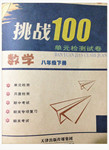题目内容
根据短文内容,从短文后的选项中选出能填入空白处的最佳选项,选项中有两项为多余选项。
Different people have different hobbies. But almost all people enjoy sports. Sports help to keep people healthy and happy, and to live longer.
_1. They buy tickets or turn on their TVs to watch the games. Often they get very excited when their player or team wins.
2. Football, for example, has spread around the world. Swimming is popular in all countries near the sea or in those with many rivers. What fun it is to jump into a pool or lake, whether in China, Egypt or Italy! 3. Think how many lovers to skate or ski in Japan, Norway or Canada.
Some sports or game go back thousands of years like running or jumping. Chinese wushu, for example, has a very long history. But basketball and volleyball are rather new. Neither one is a hundred years old yet. 4. Water-skiing is one of the newest in the family of sports.
People from different countries may not be able to understand each other, but after a game together they often become good friends. 5. One learns to fight hard but fight fair, to win without pride and to lose with grace.
A. And think of people in cold countries.
B. Sports help to train a person’s character.
C. Not a few people participate in different sports competitions themselves.
D. Many people like to watch others play games.
E. People aren’t inventing new sports or games.
F. Some sports are so interesting that people everywhere take part in them.
G. People are inventing new sports or games all the time.
 挑战100单元检测试卷系列答案
挑战100单元检测试卷系列答案
